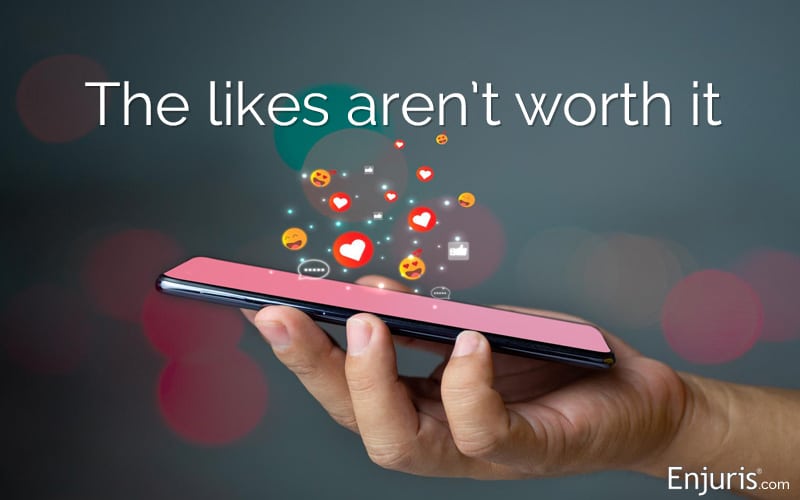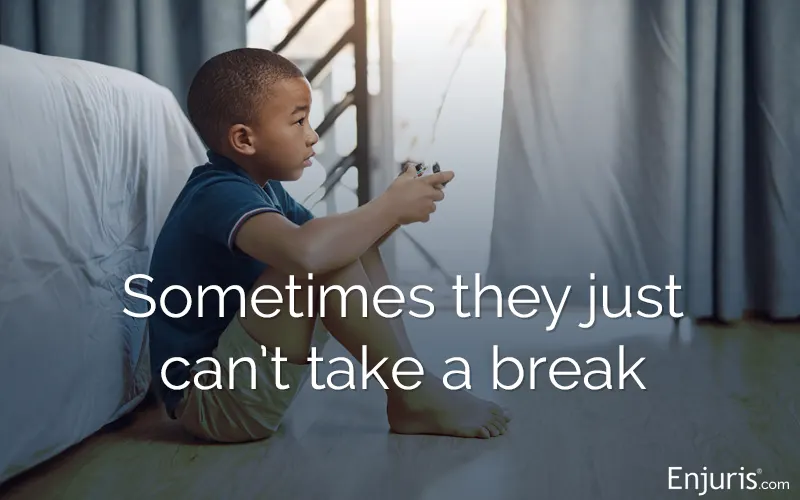
Who’s liable for a social media challenge gone awry?
You got HOW many likes?
If you’re injured, the likes don’t matter. What matters is your physical recovery and the possibility of financial compensation for your losses.
The complicated terrain of liability in viral social media challenges.
“Don’t try this at home, kids.” Maybe this disclaimer should start every viral TikTok “challenge” (and it should apply to adults, too). But it doesn’t.
TikTok challenges (or challenges that go viral on other social media platforms) are all the rage nowadays. Do you remember the Ice Bucket Challenge that swept Facebook in 2014? Or the Mannequin Challenge in 2016? They feel like ancient history today, but they were the catalysts for significantly more—and more dangerous—challenges that seemingly go viral in an instant.
While these challenges usually start as fun and harmless, some can become dangerous or even life-threatening. What if you, or someone you know, is injured while participating in one of these viral challenges? The natural question is, who's liable? Maybe it’s your own fault… in other words, use common sense before attempting a viral internet challenge. But there have been instances when liability might be less clear-cut. There could be a maze of potential defendants who could be liable for negligently causing injuries that result from social media challenges.
What types of social media challenges have led to injuries?
We know that social media is not harmless. Whether it’s spreading mis- or dis-information, damaging teens’ self-esteem, or simply sucking us down a rabbit hole of doomscrolling (or other ways of wasting time), it can have a variety of harmful effects. For the most part, each of us chooses when, how much, and how seriously to take our social media engagements. We can always choose to turn it off, take a break, or decide how we’re going to manage the information that we consume.
But sometimes, the temptation could be too much to bear. Some widespread viral challenges have enticed both children and adults to engage in activities that resulted in serious injuries.
Here are some examples of viral challenges that you might recall:
The Tide Pod challenge
Why would someone choose to eat soap?
We don’t know. But this challenge involved people filming themselves chewing and sometimes swallowing Tide laundry detergent pods. The challenge led to numerous cases of poisoning, and several participants required emergency medical attention.
The "In My Feelings" challenge
Also known as the "Kiki Challenge," this viral trend involved people jumping out of moving cars to dance to the Drake song "In My Feelings." Several injuries were reported, including people getting hit by cars or suffering falls.
The fire challenge
In this challenge, participants set themselves on fire and tried to extinguish the flames before getting seriously burned. As you can imagine, this has led to severe burns and even some fatalities.
The cinnamon challenge
In this challenge, individuals would swallow a spoonful of cinnamon powder without drinking any water. The challenge can lead to choking hazards, lung inflammation, and respiratory issues.
The salt and ice challenge
Participants put salt on their skin and then pressed an ice cube against it, causing a burning sensation. This challenge has led to second and third-degree burns in some cases.
The skull breaker challenge
This challenge involves three people standing next to each other. The two on the outside jump into the air and kick inward to trip the person in the middle, causing them to fall backward. This has led to concussions and broken bones.
The outlet challenge
Participants partially insert a charger into an electrical outlet and then try to produce a spark by touching a coin to the exposed prongs. This has resulted in electrical burns and fires.
The choking game
Though not new, this dangerous "game" found a resurgence through social media platforms. The challenge involves intentionally cutting off one's air supply to experience a high. Needless to say, this can lead to death from asphyxiation.
While some of these challenges may seem absurdly dangerous, the power of social media to influence behavior—especially among younger individuals—should not be underestimated. That's why understanding the liability aspects becomes particularly important. Always think critically about the risks involved in any social media challenge and consult a legal expert if you face the consequences of participation gone wrong.
Who is liable for an injury for a social media prank or challenge?
There are two ways to consider an injured person:
- Was the person an “innocent victim”? In other words, the injured person did not actively participate in the prank or challenge, but they were somehow injured as a bystander.
- Was the person injured while intentionally participating in the challenge?
Liability for injuries sustained from social media challenges can be murky. When a viral challenge goes wrong, there could be multiple parties potentially at fault.
Is the social media platform liable?
In other words, because you saw a TikTok video of a challenge, and you became injured while engaged in that challenge, is it TikTok’s fault?
When you registered for a social media platform, you likely checked a box that indicated that you agree to its terms and conditions. You probably didn’t read the fine print, but it’s there.
These terms and conditions usually include clauses that limit the platform's liability in various scenarios. The Communications Decency Act generally holds a social media platform harmless from liability for user-generated content.
What about the person or entity that created the challenge? Do they have a role?
This is complicated. If the creator knowingly promotes a dangerous act and someone gets injured, the creator could potentially be liable. However, proving this in court would be challenging.
Spectators or friends who encourage participation in a prank or challenge
A spectator is probably not liable for your injury. But if a friend or other person encourages participation or assists in setting up a dangerous challenge, they could be liable under certain circumstances.
Are there defenses to liability claims for social media challenges?
Perhaps. The plaintiff could claim that the social media platform failed to moderate or remove dangerous content. Another claim could be that the platform's algorithm actively promotes a dangerous challenge.
Among others, the defenses could include reliance on user agreements with disclaimers that protect the platform from liability. The U.S. Communications Decency Act Section 230 often shields social media platforms from being liable for user-generated content.
The creator of the social media challenge could be liable for misrepresenting a dangerous activity as safe, but they might argue that they couldn't have foreseen that someone would get injured performing the challenge. They might also contend that participants voluntarily chose to undertake the challenge, understanding the inherent risks.
What about your friends or spectators?
A friend who cheers you on as you participate in a dangerous challenge could share liability, especially if they were aware of the risk but failed to warn you. They could also be liable if they physically assisted you in performing a dangerous challenge, and if they were aware of the risks but failed to warn you.
However, there could be defenses available to these types of defendants.
- Assumption of risk. If it's clear that the injured party knew the risks involved but proceeded anyway, this could serve as a defense.
- Lack of involvement. Bystanders might argue that their mere presence doesn't make them liable for another's injury.
When it comes to viral social media challenges, the multitude of potential claims and defenses can make these cases incredibly complex. That's why legal guidance is often invaluable.
Here's why you'd want to consult a personal injury lawyer:
- Expertise in complex liability. These cases involve multiple layers of legal intricacies that you may be unable to navigate alone.
- Aid in evidence gathering. A lawyer can help you collect the evidence needed to support your claims and counter any defenses.
- Risk assessment. Before proceeding with a case, a lawyer can offer a realistic assessment of its strengths and weaknesses.
Participating in a viral social media challenge might seem like harmless fun until something goes wrong. If you find yourself injured, knowing your legal options can make a world of difference. And because the nature of these challenges often means dealing with complex questions of liability, consulting a personal injury lawyer is highly advisable.
Who’s at Fault for a Video Game Addiction?
An Arkansas mom thinks her son’s gaming has gone too far. She says the fault lies with the big gaming companies for the addiction—that’s why she filed a lawsuit.

